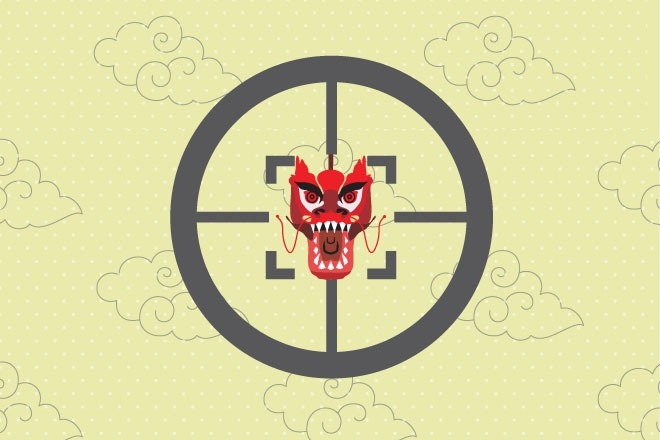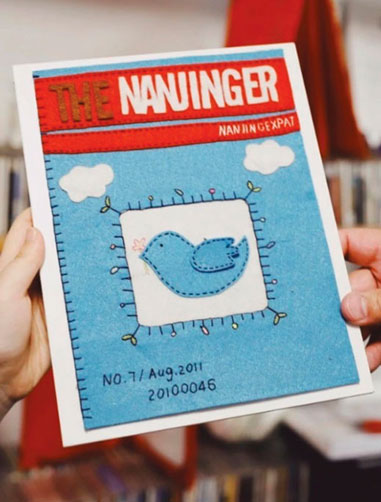Unless one is in advertising one never really thinks about. So the importance of advertising directly to the Chinese market, despite the very obvious reason for it, never really gets much thought.
Advertising campaigns abroad that are directed at the Chinese market have been about for a while now, with a great deal of failures and plenty of success alike.
When China unfastened restraints on trade and import back in the 80s, multinationals from all over tried their hand at this untapped market and many nose-dived. It appears this was due mainly to a complete lack of understanding of the Chinese language, culture and psyche.
Harriet Gaywood is Group Account Director for Insight Shanghai. Speaking with The Nanjinger, she summed up the situation, “On the 17th April, 1979, the Renmin Daily published its first advertisement which lead to a growth of advertising by Chinese brands. In 1993, Wenhui News in Shanghai even took the bold step of replacing its entire front page with an advert for a local air conditioner brand. Then, in the mid 1990s foreign brands entered the China market and typically used advertising as a direct form of communication; TV, newspaper and billboards. At the time, these brands seemed exciting, modern and offered a promise of something new. Today, we see brands competing on an equal footing whether foreign or Chinese. So foreign brands have been successful in many parts of China, but the market is changing and they will have to work harder to maintain their allure”.
Take Coke for example. When Coca-Cola entered the China market, they named their product something that when pronounced sounded like “Coca-Cola”. The characters on the other hand, had the meaning, “Bite the Wax Tadpole” (蝌蚪啃蜡). When they learned of their blunder, they later changed to a set of characters that mean “Happiness in the Mouth”.
Mike Fromowitz, from Campaign Asia, illustrated a lack of political know-how as well with Italian luxury car giant Fiat. Their faux pas was using Richard Gere in a home-based commercial, which presented him driving from Hollywood to Tibet. Due to Gere’s film, “Seven Years in Tibet”, and his outspoken support for the Dali Lama he is unpopular in China, there was a huge online uproar on Chinese message boards with people commenting that they would never buy a Fiat.
Raining supreme as China’s fast food emperor, once upon a time however, KFC bombed in its earlier days too by getting off on the wrong foot. “When the company opened its doors in Beijing, [it] had accidentally translated its infamous slogan ‘Finger-lickin’ good’ to a not so appetising phrase; ‘Eat your fingers off’”, wrote Chad Brooks for the Business News Daily. In spite of this, the Southern fried chicken brand stuck to it and has gone on to dominate China’s fast food arena.
During the 90s China’s advertising took a weird and wacky turn, perilously reminiscent of Japanese madcap marketing, which could have made it very difficult for foreign products and services to compete. In 2011, once again, KFC was up there on the weird list, with its “Taste of Ireland” campaign, where it featured Baileys Irish Cream as its new chicken sauce.
Better still was the “Itchy Breast Cream” campaign by the Sanjiu Medical & Pharmaceutical Company, which appeared along the lines of, “don’t feel the need to scratch your breasts embarrassingly against the desk when you’re itchy at work, just buy this cream!”
For the better, Chinese advertising seems to have cleaned up its act and has begun to join ranks with the worlds slickest, smartest and slightly more subliminal of advertisers.
The British government recently ran a fun tourism campaign where they asked thousands of Chinese people to rename famous British landmarks. Massively popular, it produced funny names such as (Sherwood Forest) “The Forest of Chivalrous Thieves” and “A Tower Allowing Us To Pluck Stars From The Sky” or “Fish Leaping Bay”, and (Savile Row) “Custom-Made Rich People Street”. The campaign was a huge success and airlines noted a 27 percent rise in flights to the UK straight after it.
It is hard to talk about advertising to the Chinese without mentioning Wechat, the social media app that is China’s biggest mobile accomplishment to date. Handling everything from instant chat to large bank transfers, flight reservations and Taobao (online shopping) orders, what Wechat cannot do is more the question. So obviously the first place businesses are going to want to advertise in China is Wechat.
Swiss watch brand Montblanc used the importance of phases of the moon in Chinese astronomy to attract users to its watches. The campaign was made interactive allowing users to type in their gender and birthdate for which they were given information regarding their love life, hobbies and work. This hugely helped promote the Meisterstück Heritage Perpetual Calendar and Bohème Perpetual Calendar Jewelry watches which included moon phases on their dials.
Yves Saint Laurent prepared an eight-question survey about kissing habits; upon completion users where given a selection of lipstick recommendations to choose from depending on their answers. To promote the “Fast and the Furious 7” movie, the trailer was played as an ad on Wechat moments directing traffic to the site for people to buy tickets.
Getting the hang of things now, KFC utilised QR code scanning to give away edible coffee cups, whereas Levi’s kicked off their women’s denim line with a video of spokeswoman Alicia Keys speaking about the power of women, inviting them to share their favourite lipstick colours.
Channel took advantage of WeChat’s Shake feature while Olay had young girls press their cheeks up against a famous Chinese actor for which they were given cuteness results while further competitions allowed users to win red packets.
The latter examples prove how advanced China is becoming with advertising but as one side of Chinese advertising rises in quality another falls spectacularly to pieces. Washing detergent company Qiaobi has come under a lot of fire in recent months due to their “Wash the Black Man” commercial in which a Chinese woman lures a black man towards the washing machine where she proceeds to shove him inside; a minute later a very white Chinese man emerges from the machine… squeaky clean. Needless to say, there was uproar from the black community in China and when it made it to YouTube the backlash only worsened.
In stark contrast, Japanese skincare company SK-II has done an impressive job at empathising with the people this year with its “Left Over Women” campaign. In China, the term “left over woman” refers to a woman older than 25 who is not yet married. Marriage and starting a family is still the number one priority for most Chinese families. Nowadays, more and more women are choosing a career and travel over a family and are being branded as left over. SK-II released a 4 minute long, very emotional commercial in order to promote its new anti-aging cream. The commercial spoke about empowering left over women, it went viral and proved extremely popular.
Family values are, one could argue, the biggest importance in a Chinese persons life. While this is beginning to change with the emergence of people living overseas and away from their families, family is still a major factor. In the 90s, McDonalds campaigns in the US ran commercials featuring a child enjoying an affordable and fun meal; the focus was on children, fun and cheap. Meanwhile in China, during the 90s, McDonalds drew attention to the fact that beef was an expensive meat; with their “manly beef burger” campaigns they were able to sell burgers at a higher price. They also placed heavy importance on a McDonalds meal as quality time to spend with their family; again the focus was on quality, masculinity and family.
Last but not least, the mighty Apple ran a commercial entitled “The Old Record” about a grandmother and granddaughter. It shows the granddaughter recording her grandmother’s old vinyl on an iPad for her to treasure and listen to. Again, this utilises Chinese family values and relates to a connection between the past and the present.
While western corporations now exhibit a clear understanding of Chinese modern culture and the importance of connecting to the local psyche, with luxury brands setting the pace, advertising to the Chinese just got a lot harder.
This article was first published in The Nanjinger Magazine, October 2016 issue. If you would like to read the whole magazine, please follow this link.











